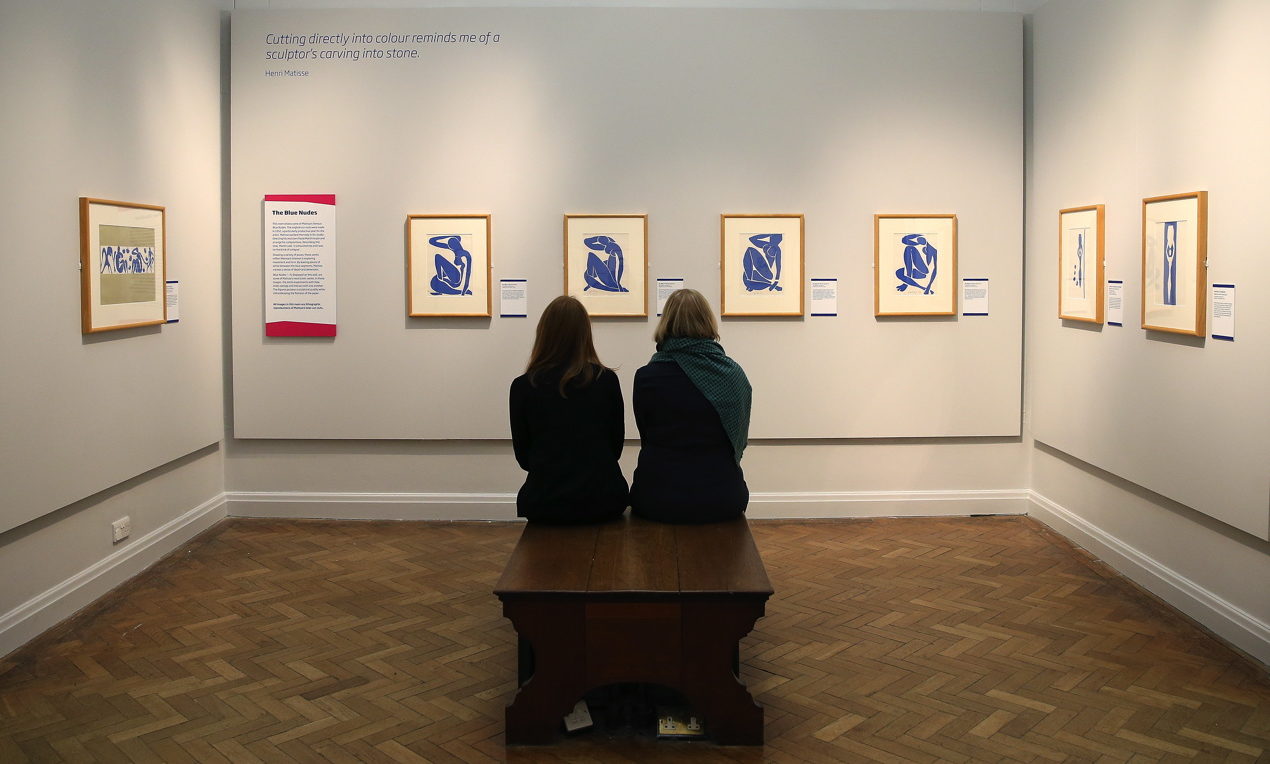Matisse: Drawing with Scissors
When Matisse’s health prohibited him from sculpting he began to create paper cut-outs but insisted there was no gap between the forms
Henri Matisse helped artistically define the early 20th century. The colour and clarity of his neo-Impressionist paintings were both bold and ground-breaking, his sculptural work an innovative blend of the modern and classical.
Following surgery for abdominal cancer in 1941, however, Matisse found himself either bed or wheelchair bound and unable to physically paint and sculpt in the manner he had previously. As driven as ever the Frenchman then turned toward cut-outs, a process he famously described as “drawing with scissors.”
“He had studio assistants paint sheets of paper with really vibrant shades of gouache, which he then cut into shapes and had placed either directly on the studio wall or onto larger sheets of paper,” says Kate O’Donoghue, curator of Matisse: Drawing with Scissors, which is opening soon at Port Sunlight’s Lady Lever Art Gallery. “From the accounts we have he worked quickly and was very confident, cutting directly without sketching things out first. Matisse described feeling almost as if he was taking flight when he had the scissors in his hands.”
Some 35 lithographic prints of these cut-outs will be displayed at the Lady Lever. Although many of the original works still exist in collections around the world, their fragile nature makes collating them for an exhibition difficult. And as O’Donoghue explains, the creation of these facsimiles was all part of the artist’s plans.
“These reproductions were made for French art journal Verve and published in 1958 – four years after Matisse died – in a special edition which was discussed with the artist prior to his passing. He was very concerned about his legacy and even helped prepare some of these prints in the final days before his death. They’re very faithful to the originals and show he really wanted his work to be accessible to a broader public.”
The exhibition will dedicate an entire room to the famous Blue Nudes series, while works such as the incredibly bold The Snail and La Negrésse – inspired by famed dancer, activist and French Resistance agent Josephine Baker – will also be shown in Port Sunlight. One of Matisse’s early paintings, The Aqueduct at Arcueil, will be displayed alongside the cut-outs to, according to the curator, “illustrate the dramatic transformation Matisse’s work took over his career”.
“We can see from photographs taken in his studio that even during the time Matisse was concentrating on cut-outs his work evolved and changed and I’d like to think this exhibition shows that,” explains O’Donoghue.
“There was a lot of spontaneity and feelings of transience while these works were being created.”
Until the end Matisse was creating art in a manner he regarded as a linear progression, resolutely not viewing cut-outs as some poor substitute for painting and sculpture. In fact he is on record stating: “There is no gap between my earlier pictures and my cut-outs. I have only reached a form reduced to the essential through greater absoluteness and greater abstraction.”
“During his last years assistants said it was like Matisse was addicted to his work,” O’Donoghue concludes. “Sometimes he would stare at the work on his studio walls overnight, obsessed by his creations and totally preoccupied with finishing everything before he passed away. In terms of colour, line and the study of the human form he was one of the most influential of all artists.”
Matisse: Drawing with Scissors, Lady Lever Art Gallery, Port Sunlight, until March 2020
Photo: Gareth Jones
